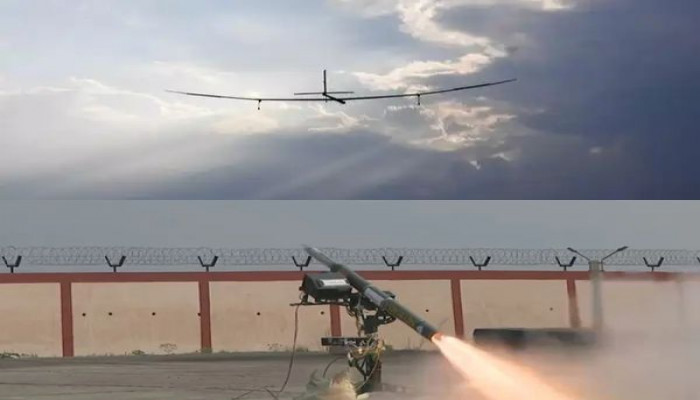India’s HAP prototype built for border patrol completes major flight test
- In Reports
- 05:28 PM, May 19, 2025
- MyIndMakers
India has finished yet another significant round of flight testing for its native high-altitude platform (HAP) program. This subscale prototype was developed by the National Aerospace Laboratories (NAL). The team performed critical pre-monsoon test flights with a certified, improved autopilot system.
From May 8 to May 13, the solar-powered stratospheric vehicle flew through cloud cover in a series of back-to-back test flights. Fully developed, this platform can enhance India’s border security infrastructure and surveillance capabilities.
The Aeronautical Test Range (ATR) in Challakere, Chitradurga, some 200 km from the city, served as the venue for the tests. The HAP now uses a certified sensor-redundant control system developed by NAL. This hardware enables completely autonomous vehicle operation. It uses custom control laws, navigation algorithms, and automated fail-safes for all possible scenarios. In simpler terms, the HAP now flies on a certified autopilot system.
L Venkatakrishnan, programme director of HAP at NAL, explained that the team chose to develop proprietary systems instead of following the open-source route common among UAV developers both nationally and globally. “By developing proprietary systems rather than adopting the open-source approach common among UAV developers nationally and globally, NAL has joined the select few organisations worldwide pursuing certification — a critical requirement for integration into the national airspace system,” he told TOI.
The recent tests demonstrated that the vehicle could continue flying even when solar energy production was reduced by cloud cover. It reached altitudes of 24,000 feet (FL240 in aviation terminology).
Just last year in May, the same subscale prototype — measuring 12 metres in wingspan and weighing less than 22 kilograms — achieved flight endurance of more than 8.5 hours at altitudes of nearly 7 km above mean sea level. It used an open-source autopilot system during those tests.
Venkatakrishnan stated that the new certified autopilot system enables the HAP to operate entirely autonomously without human intervention. “This is the same autopilot which will work on the full-scale vehicle we are building,” he said.
Though NAL constructed the current prototype to test aerodynamic design and subsystems for the full-scale version, it already provides significant capabilities. “With a payload capacity of nearly 1kg and an operating altitude of up to 25,000 feet, it can patrol hundreds of miles of national borders that would otherwise require human presence. Additional applications include geoinformatics, meteorology, and crowd monitoring,” Venkatakrishnan said.
The full-scale version will extend those capabilities. It will carry a 10 kg payload from an altitude of 65,000 feet (approximately 20 km) and offer geographic persistence.
Earlier this month, the Indian Air Force (IAF) issued a Request for Information (RFI) for such high-altitude platform systems. But no comparable system has yet been deployed anywhere in the world for military or civilian purposes.
India faces unique weather-related challenges and strategic concerns about the availability of assets during emergencies. So, indigenous development remains vital. The military will only procure these systems if they become available soon and prove their reliability. NAL expects to begin flight testing of the full-scale HAP by the first quarter of 2026.
The system also shows potential in civilian domains. The Indian Institute of Tropical Meteorology in Pune has expressed interest in using the HAP to deploy radiosondes for internal measurements of monsoon clouds. Other parties are also exploring its use in telecommunications.
“We are already ready to carry a 5G base station because in terms of power and size-weight, it can easily do that,” Venkatakrishnan said, highlighting the platform’s capability to serve as an aerial telecommunications relay.







Comments